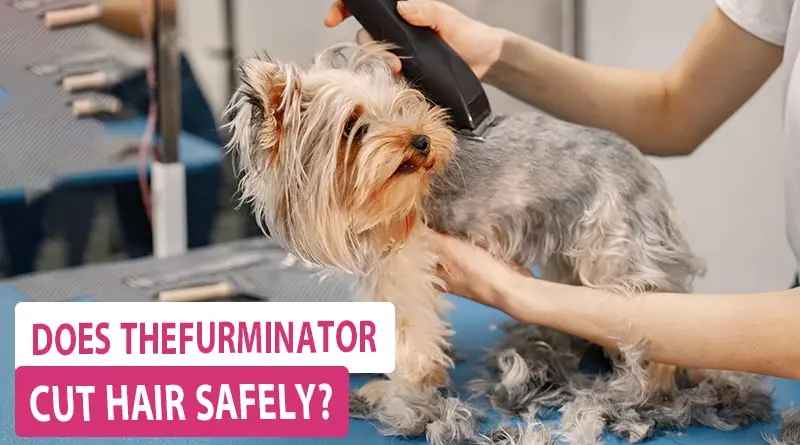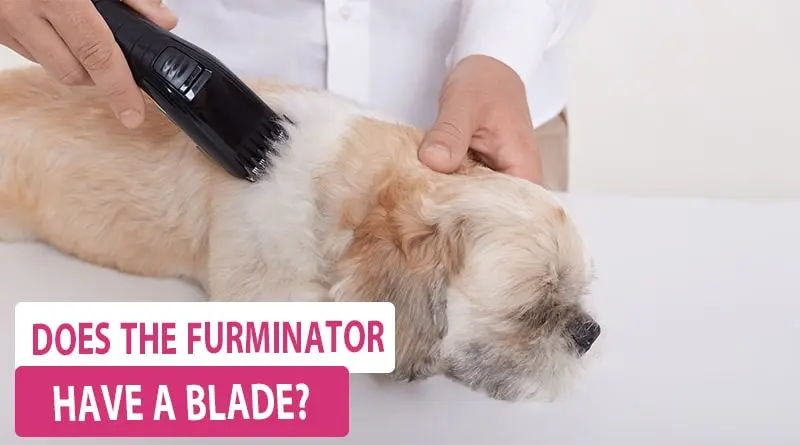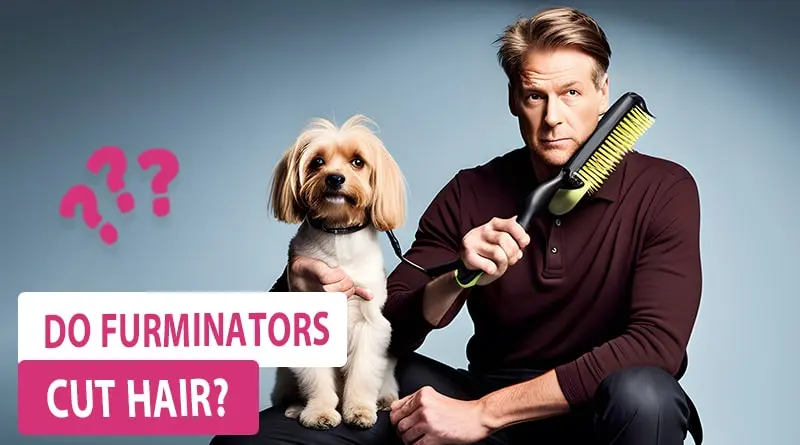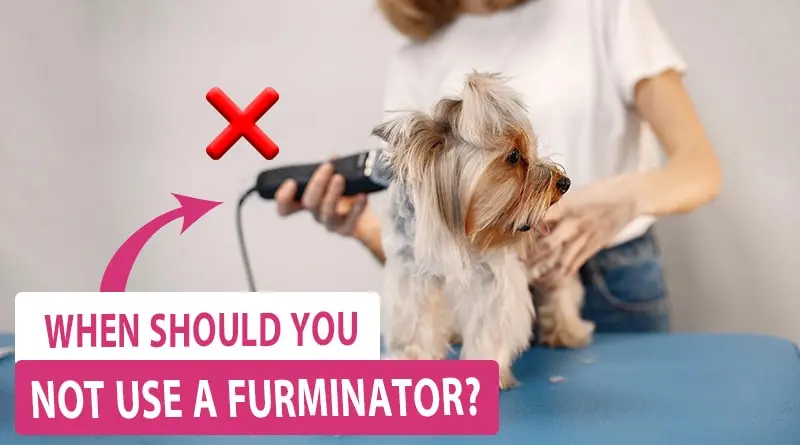Are you tired of finding clusters of Hair all over your house? The Furminator is a fantastic de-shedding tool, but it’s essential to clarify, “Does the Furminator cut hair or just remove loose fur? Look no further than the Furminator! This handy grooming tool has become incredibly popular among pet owners, but there is some confusion about its effectiveness. One common question that arises is:
Does the Furminator Cut Hair?
“The Furminator de-shedding tool doesn’t cut hair due to its absence of sharp edges or blades. Instead, it utilizes closely spaced metal bristles to remove loose hair from your dog’s coat.”
In this article (Does the Furminator Cut Hair), we will separate fact from fiction and provide all the information you need about this magical grooming tool. So, let’s dive in and uncover the truth behind the Furminator!
Does the Furminator Cut Hair Safely?

The Furminator is not your average grooming tool. It is designed to tackle one of the most common pet owner frustrations – shedding. This innovative device removes loose Hair from your pet’s coat, reduces shedding, and keeps their fur sleek and shiny.
The Furminator is designed with fine teeth to reach deep into a pet’s undercoat, minimizing shedding and fur clumps around the house.
It stimulates natural oil production for the promotion of healthy skin and coat, resulting in softer fur, less dandruff, and reduced itching.
I heard that the Furminator is a popular grooming tool, but I need clarification. Does the Furminator cut Hair effectively on long-haired breeds?
| Point | Information |
|---|---|
| Furminator's Purpose | Designed for deshedding, not hair cutting, effective for maintaining long-haired breeds' coat health. |
| Tangle and Mat Reduction | Reduces tangles and mats, making long hair more manageable. |
| Allergen Control | Controls excess hair, reducing allergens and keeping homes cleaner. |
| Caution for Sensitivity | Use with care on sensitive long-haired breeds to prevent discomfort. |
| Haircut Considerations | For haircuts or trimming, consider clippers or scissors, not the Furminator. |
| Overall Effectiveness | Furminator effectively desheds and maintains coat health but doesn't cut long hair. |
The Furminator is an effective tool for keeping pet shedding under control. It can help to reduce allergens in the home, potentially leading to fewer allergy symptoms.
Regular grooming with the Furminator keeps coats healthy and reduces messy fur build-up.
Here is the Most Popular Question: “What to Expect for Your Dog After Splint Removal?“
Does the Furminator have a Blade?

Its unique design and functionality set the Furminator apart from other grooming tools. Unlike traditional brushes, the Furminator features a series of small teeth that effectively remove loose fur from your pet’s coat. But does it have a blade?
The Furminator does not contain an actual blade, and the teeth are thin and rounded to protect against injury or discomfort for your pet.
These teeth are designed to help reduce shedding by reaching the undercoat and removing dead hair. It works by gently pulling through the coat, grabbing loose fur, and removing it efficiently.
| Point | Information |
|---|---|
| Furminator's Purpose | The Furminator is designed for removing loose fur and undercoat, not cutting hair. |
| How It Works | It uses a comb-like blade to reduce shedding and maintain the pet's topcoat. |
| Hair Cutting Capability | The Furminator does not cut primary, healthy hair, and is not for haircuts. |
| Preventing Accidental Cutting | Users should be cautious to avoid accidental hair cutting, especially on thin-haired pets. |
| Proper Usage Guidelines | Following the manufacturer's instructions is crucial to avoid hair cutting. |
| Professional Grooming Needs | For specific haircuts or trims, consult a professional groomer with cutting tools. |
| Overall Function | It's a deshedding tool, reducing pet hair around the home and maintaining the coat. |
It’s important to note that while the Furminator doesn’t have a blade, you should still exercise caution when using it on sensitive areas such as around ears or genitals.
Popular Question: “My Dog ate Aquaphor“
How Does a Furminator Work?

When using a Furminator, there is a proper technique to ensure you get the best results for your pet. First and foremost, choosing the right Furminator size for your pet’s coat length and size is essential. This will help optimize the effectiveness of the tool.
Before using the Furminator, ensure your pet’s coat is clean and dry. Brushing out tangles or mats before using the tool will prevent discomfort for your furry friend during grooming.
When using the Furminator, gently brush in long strokes in the direction of hair growth. Applying too much tension can cause pain or harm their skin, so use a light touch.
Attention to sensitive areas such as their belly or paws is also essential. Take extra care when grooming these areas, and adjust your technique accordingly.
By following these simple steps and taking care while using a Furminator, you can effectively remove loose fur from your pet without causing any harm or cutting their hair unnecessarily.
Here is the more popular Question: “How to Recognize and Manage Inverted Nipple on Dogs?“
Do Furminators Cut Hair?

When grooming our feline friends, many pet owners wonder if the Furminator is safe for trimming their cat’s Hair. The answer is no; the Furminator does not cut your Cat’s Hair.
The Furminator is a de-shedding tool that removes loose, dead Hair from your Cat’s coat. It works by reaching deep into the undercoat without cutting or damaging the top layer of fur.
With its specially designed teeth, the Furminator gently removes excess Hair while also helping to reduce shedding around your home.
Many pet owners ask, “Does the Furminator cut hair?” before using it on their furry friends, wanting to be sure about its grooming capabilities.
Before using a Furminator on your cat, make sure:
- Makey is comfortable and relaxed. Start by
- Gently brush their back or sides in small strokes using light pressure.
- Be mindful
l of any signs of discomfort or sensitivity from your furry friend.
It is worth noting that not all cats may enjoy being groomed with a Furminator. Some may find it uncomfortable or stressful, so constantly monitor your cat’s response during grooming sessions and adjust accordingly.
Remember, regular grooming sessions are essential for overall feline health and well-being.
However, always consult professional groomers or veterinarians if you have concerns about using specific tools on your beloved kitty.
Here is the More Popular Question: “Why is My Dog just Stands in one Spot? “
What dogs do not use Furminator?
While the Furminator is a popular grooming tool for many dog owners, it may not suit all breeds. Dogs with very short or non-shedding coats typically do not require regular brushing.
They may not benefit from a Furminator. For those considering grooming their poodle, asking, “Does the Furminator cut hair or merely reduce shedding?” is crucial to ensure their pet’s comfort.
Breeds such as Greyhounds, Boxers, and Dobermans have short fur that naturally sheds less hair and requires minimal brushing.
Non-shedding or low-shedding breeds such as Poodles, Bichon Frises, and Malteses may require professional grooming techniques like clipping or scissoring rather than a brush.
Each dog has unique grooming needs; consulting with your veterinarian or a professional groomer can help decide if the Furminator is appropriate for them.
Here is the More Popular Question: “Can Dogs Eat Twinkies?“
When should you not Use a Furminator?

When should you not use a Furminator? While the Furminator is an excellent tool for maintaining your pet’s coat, there are certain situations where its use may not be appropriate. Knowing when to put the brush down and considering alternative grooming methods is essential.
The Furminator should be avoided when your pet has skin conditions or irritations, as its sharp teeth may aggravate sensitive areas.
Working through mats and tangles in the fur before using the brush is recommended, as it can be painful otherwise and may result in pulling or cutting hair.
For young animals, gentler brushes designed for their age are advised until they mature enough to use the Furminator.
Some dogs and cats do not enjoy being groomed with the Furminator due to its sensation or noise. Notice signs of anxiety or distress during grooming sessions despite the proper technique (e.g., trembling, growling).
It might be time to explore other options that suit their comfort level better. Always prioritize your pet’s well-being above all else when deciding whether or not to use a Furminator!
Here is the Most Popular Question: “Natural Way Dog Food“
Can the Furminator Remove Too Much Fur?
When grooming our furry friends, we want to balance keeping them comfortable and maintaining their coat health. One of the concerns many pet owners have when using a grooming tool like the Furminator is whether it can remove too much fur.
Proper use of the Furminator can effectively reduce shedding. Gentle strokes toward hair growth are best to avoid over-grooming and skin irritation.
Consider breed and coat type before using the Furminator extensively – some breeds may require different brushes.
Constantly monitor your pet’s reaction during grooming sessions – if they appear uncomfortable or show signs of distress, take a break and reassess your technique.
Attention should be paid to the amount of fur removed. It is essential to ensure both pet and owner have a positive experience during grooming sessions.
Here is the Most Popular Question: “Understanding Why Your Dog Wakes Up Crying in Pain. “
Disclaimer
This Article (Does Furminator Cut Hair Cat) contains essential information. We are not veterinarians but we have Dog dietary professionals. If your Dog discloses any indication of ailment, call your veterinarian.
Bear in mind that every Dog is Different, and if you have any worries regarding your Dog’s health or practices, do not wait to seek specialist recommendations from your veterinarian.
If you want more Knowledge about Pet Nutrition, visit our Blog Section.
FAQs (Frequently Asked Questions)
The Furminator is a pet grooming tool that removes loose fur and undercoat and reduces shedding.
The Furminator is designed to help reduce the shedding of your pet’s hair. It works by removing loose, dead undercoat fur without damaging the topcoat. The Furminator does not cut or shave the hair of your pet.
It’s not bad for cats but should be used carefully, especially on sensitive or thin-haired cats.
Furminators are not bad for dogs when used correctly; gentle usage is critical.
The Furminator does not cut Hair; it’s designed to remove loose fur and undercoat while preserving the topcoat’s length and health.
Use it once or twice a week for most pets, adjusting based on your pet’s shedding patterns.
The FURminator® Undercoat deShedding Tool is not suitable for non-shedding breeds or pets with sensitive skin. If you’re unsure whether your pet has an undercoat, it’s best to consult with a veterinarian.
The FURminator® Undercoat deShedding Tool can cut the top coat and irritate the skin. Limit stroking each area to five times per grooming session. Use a slicker brush, rake, and comb for long-haired or double-coated breeds like German Shepherds, Huskies, or Labs. Opt for a rubber curry brush for single-coated breeds like Dachshunds or Bulldogs.
Latest Articles
- Can Dogs Eat Soursop Fruit? Find Out the Truth Here
- Can Drug Dogs Smell Kratom? The Shocking Truth Revealed
- When Do Dogs Go into Heat after Having Puppies?
Subscribe to Pet Nutrition Guru
Subscribe below to receive expert pet care advice, pet wellness tips, and exclusive promotions.




